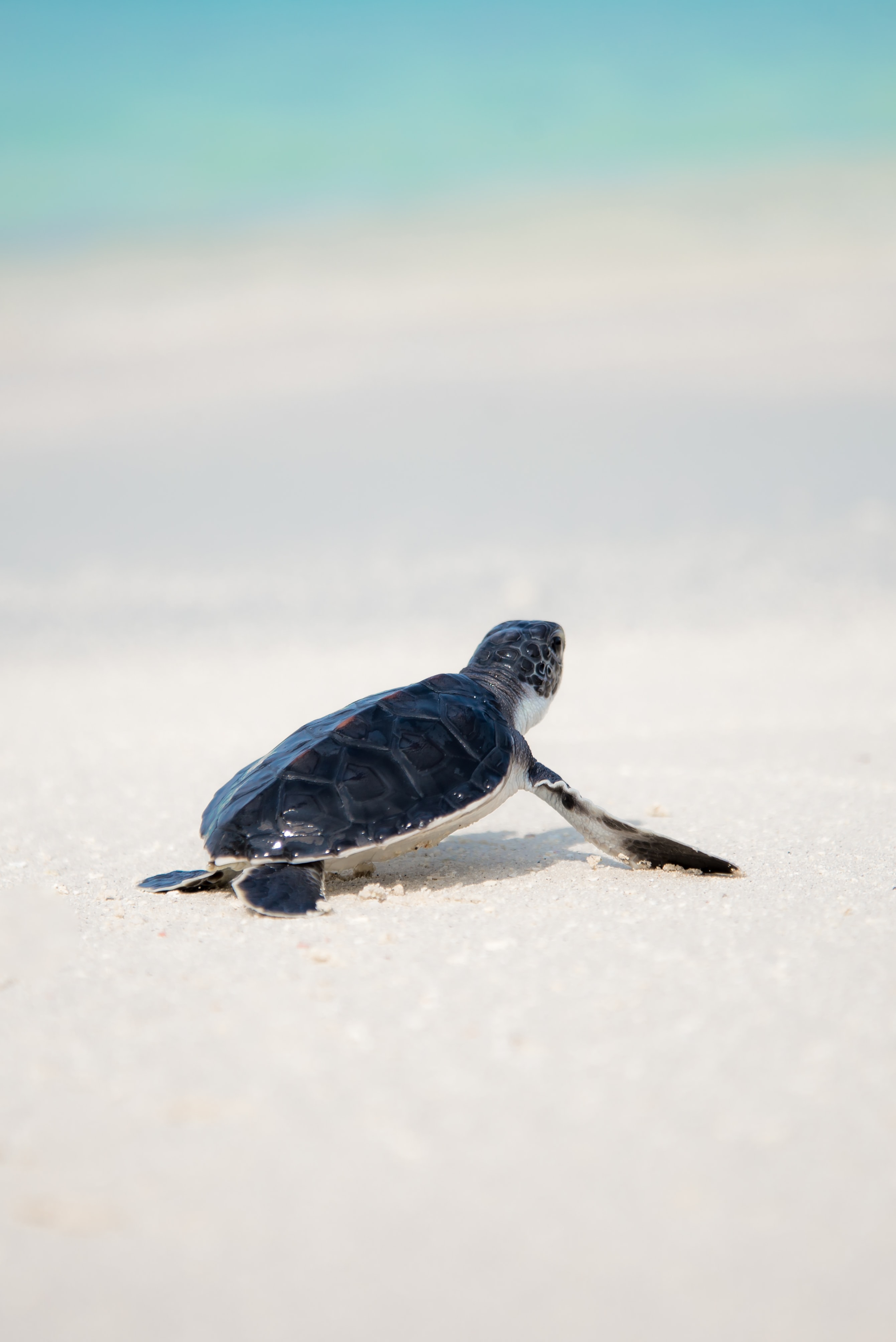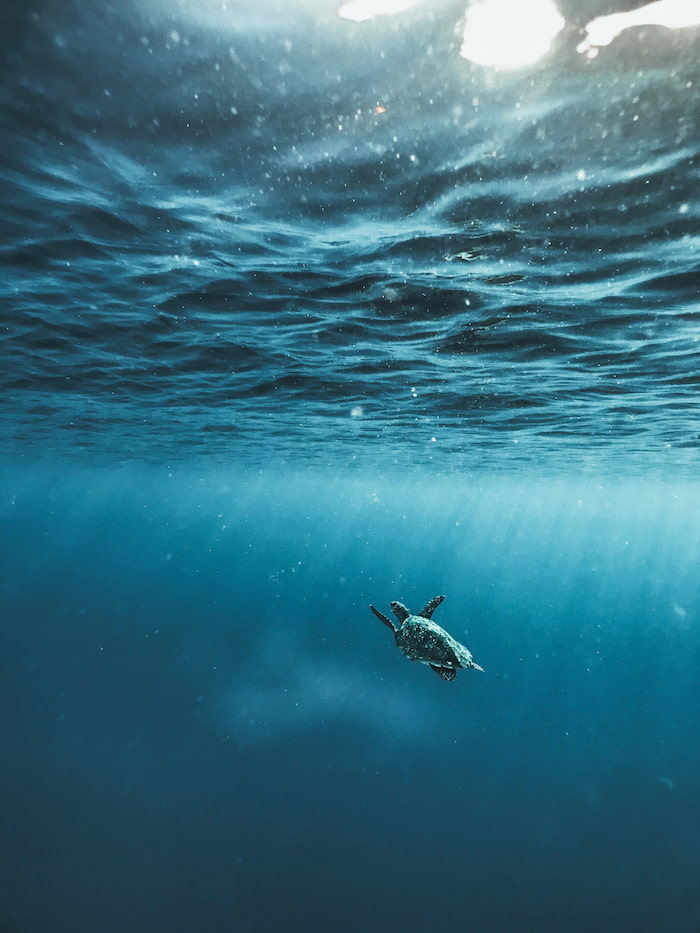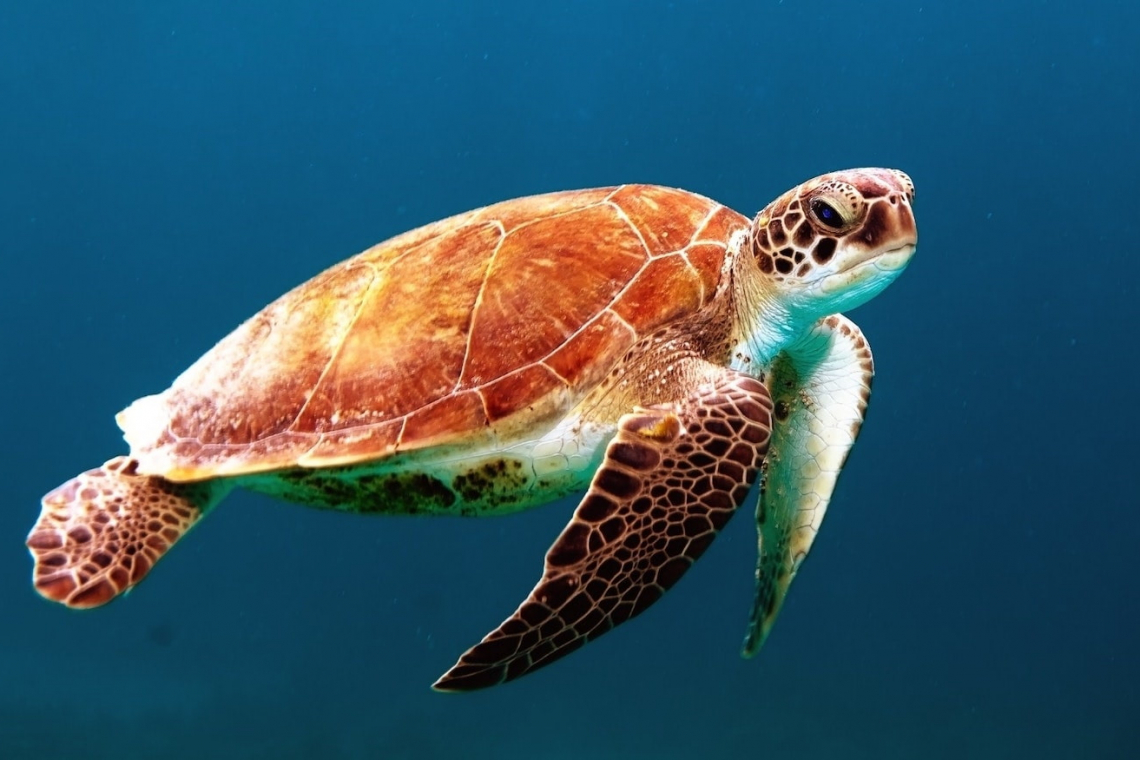There are seven species of Sea Turtles found in all areas of the ocean, except the polar regions. According to the IUCN, each sea turtle species is considered to be at risk of extinction:
- Loggerhead Sea Turtle (Caretta caretta) - vulnerable
- Olive Ridley Sea Turtle (Lepidochelys olivacea) - vulnerable
- Leatherback Sea Turtle (Dermochelys coriacea) - vulnerable
- Green Sea Turtle (Chelonia mydas) - endangered
- Hawksbill Sea Turtle (Eretmochelys imbricata) - critically endangered
- Kemp’s Ridley Sea Turtle (Lepidochelys kempii) - critically endangered
- Flatback Sea Turtle (Natator depressus) - data deficit
A female sea turtle will generally breed every two to four years. During the breeding season, they will emerge from the ocean during the night and look for a suitable nesting area above the high tide line. The search for a suitable nesting site may extend high into the dunes. If a female sea turtle is disturbed during her search for a suitable nesting site, or while she is digging a nest, she may abandon her activities and return to the beach another night to try again, which may lead to a state of exhaustion.
So, how can we protect sea turtles on the beach during nesting season and all year rounds in the ocean?

Protecting Sea Turtles on the Beach
Reduce Human Activities on the Beach During Nesting Season
Ideally, human activities should be reduced to a minimum on the beach during nesting season. For example, four-wheel drives should be banned from driving on the beach during sea turtle nesting season, as they compress the sand and can destroy eggs. People should also be encouraged to walk below the high tide line as they are less likely to accidentally walk on a nest and disturb it. The more humans can respect and protect the natural beach area during sea turtle breeding season, the more chance there will be of a high number of hatchlings reaching the sea. The Ningaloo Turtle Program has developed a Turtle Watching Code of Conduct based on nesting phases and the turtles’ vulnerability of disturbance at each phase.
Stop, drop, rock
If you see a sea turtle on the beach, practice the Stop, Drop, Rock technique. Stop immediately on sight of the sea turtle. Drop to the ground and remain in place like a Rock until the sea turtle has finished what she is doing and returns to the sea. It is possible to quietly observe sea turtle nesting from a respectful distance in a rock position, which at the same time allows her to continue her activities undisturbed.
Avoid light pollution
Both sea turtles and hatchings are highly sensitive to light. Sea turtles use the moonlight to guide them on the beach, while hatchings use the sunrise as a guiding light to lead them to the ocean. Hatchlings need to reach the ocean soon after emerging from the nest to preserve their energy and keep their body temperature regulated. Artificial light from torches, cars and street lights can lead sea turtles and hatchlings astray and may lead to their untimely death due to overheating and exhaustion. Avoid touching sea turtle hatchings, unless absolutely necessary.

Protecting Sea Turtles In the Ocean
Slow Boat Travel
As a tourist, or when choosing a ferry option, choose slow boat travel where possible. Slow-moving travel minimises the risk of injury to marine life, including sea turtles. Choose an operator that cares about the environment and maintains a respectful distance from wildlife.
Reduce Plastic Use
Sea turtles have been known to mistake plastic bags for jellyfish and eat them, which can cause death. There have also been many documented cases of sea turtles getting tangled or affected by plastic objects in the ocean, which causes them harm. Minimising plastic consumption, particularly avoiding single-use plastic such as plastic bags, plastic straws and plastic forks, etc, can help sea turtles swim free in the ocean.
Choose responsible fish products
If you consume fish, choose products that aim to reduce by-catch and are operating in a sustainable way. One study estimated that around 1.5 million sea turtles were caught in fisheries each year, with around 40% of all by-catch discarded. Look for a recognised certification to help protect sea turtles in the ocean.
Your Actions Matter
The overall picture for sea turtle populations has been mixed during the COVID pandemic. In some places, nesting sites of sea turtles reached record highs due to a lack of disturbance from tourism. In other parts of the world, the pressures of COVID has driven local populations to diversify their livelihood activities, leading to sea turtle egg poaching and subsistence hunting.
Despite the challenges sea turtles continue to face, there are many ways our daily actions can support healthy ocean and sea turtle populations. In particular, we can all support healthy ecosystems for sea turtles by protecting coral reefs, respecting the beaches where sea turtle nests and hatchlings emerge during the breeding season, and contributing to a safe existence for sea turtles on the high seas with our personal consumption choices. What actions are you taking to support sea turtles?


